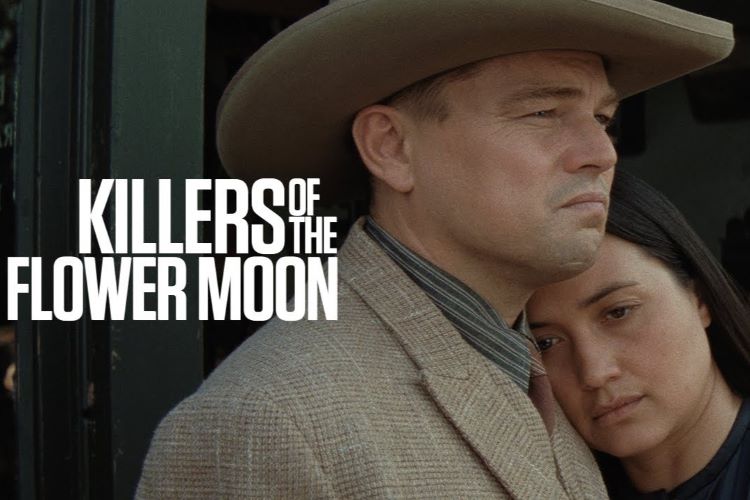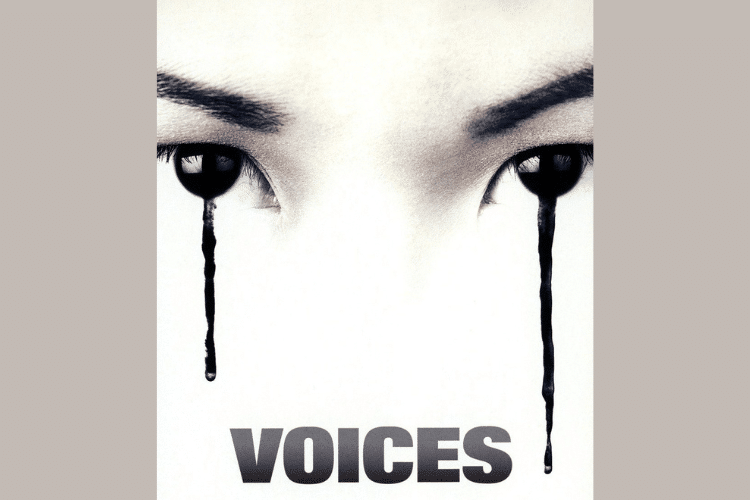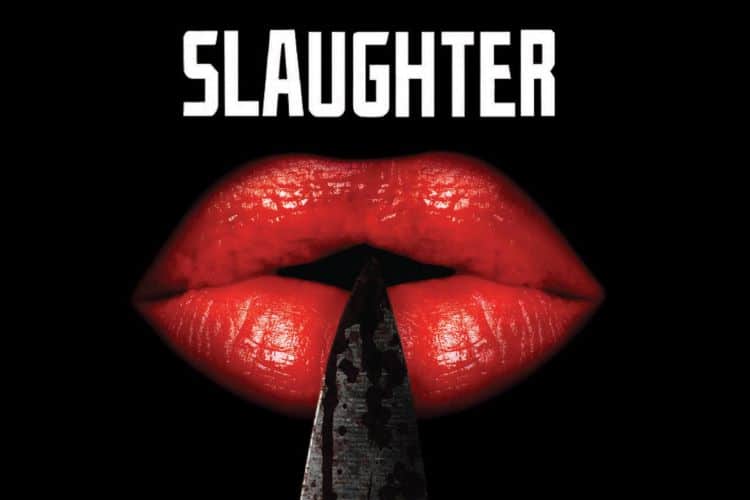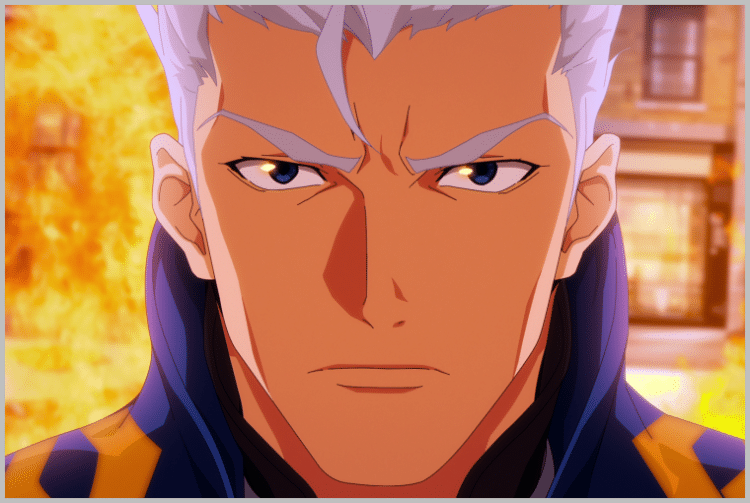OSAGE COUNTY
Main Cast: Lily Gladstone, Leonardo DiCaprio
Director: Martin Scorsese
All of my darling friends out there in the dark. Je suis desole that I have not been able to regale you with all of the details of my fabulous Hollywood life these past few months, but circumstances just wouldn’t allow it. As you will recall, I was in the process of developing a brand new musical stage spectacular of To Kill a Mockingbird entitled Scout’s Honor to feature yours truly in the title role. Things were going swimmingly through the development period, and we were just about ready to enter technical rehearsals when absolute disaster struck.
I was making my descent in a set of silks as part of the second act production number Your Father’s Passin’ when some ignoramus of a stagehand pulled the wrong lever sending my plummeting into the judge’s bench. The impact was such that I fractured both humeri and had to have fiberglass casting on both arms for some months. Fortunately, a good orthopedic surgeon and some physical therapy have allowed me to return to fighting form, but I was rather out of commission for a while. It’s just not possible to type when you are unable to move either your elbows or your shoulders. I did try once but the end results looked like something produced by the infinite number of monkeys at their infinite number of typewriters on one of their off days.
Of course, Scout’s Honor has had to be put into abeyance for the indefinite future and this has left me at somewhat loose ends. I’ve managed to keep things going at VickiTube, my screening service full of viewing choices for the woman of today but no matter how many segments I do on ‘You and cubic zirconia’ or ‘Wicker: is it harmful to your dating life?’, I just don’t feel like I’m being artistically fulfilled. I’ve been in touch with Joseph, my manager, and told him to make sure all of the studios are aware that I am fully healed and available for work but nothing much has come in other than an offer to appear as a guest corpse on Law & Order: SVU but I find playing dead is somewhat limiting. Besides which, corpses rarely get a tap break.
As I have a significant amount of time to kill, I headed into the home theater where I found Killers of the Flower Moon, Martin Scorsese’s latest film, awaiting on the Apple TV streaming service. At three and a half hours, it’s rather a prolonged epic so I made up a double batch of watermelon margaritas before settling in to view it. I had read and enjoyed the book some years ago and was curious how such a non-fiction tale of skullduggery in 1920s Oklahoma might be translated to the screen. The book, while concentrating mainly on one extended family, was not constructed as a clear linear narrative so there would need to be extensive rewriting to meet the needs of narrative feature film. I don’t think the screenplay, by Scorsese and Eric Roth, completely solved all of those issues.
The Osage tribe, whose traditional lands centered around the confluence of the Missouri and Mississippi rivers, were forced from the Great Plains into Oklahoma in the late 19th century and granted lands in the north central part of the state. The land wasn’t particularly productive and nobody else wanted it. The Osage nation, as part of the treaty, retained mineral rights to the land and, when oil was discovered under their lands in the early 1900s, tribal members who were entitled to shares in the profits (head rights) were suddenly among the wealthiest people per capita on the planet. All of a sudden, capitalistic America became very interested in the Osage and all sorts of chicanery developed to keep the tribe in its place and the money flowing to the oligarchs of the region – requiring tribal members to enter guardianship, engineering wills and family relations, and ultimately systematic murder. This was the same Oklahoma that bombed and destroyed the African American business district of Tulsa so it shouldn’t be too shocking that they weren’t keen on fair treatment for Native Americans either.
We’re brought into the tragedy of the Osage through the eyes of a miscast Leonardo DiCaprio as Ernest Burkhart (he’s clearly fifteen to twenty years too old for the role). Ernest, who has been away with the army in World War I, returns to the towns of Fairfax and Gray Horse Oklahoma where the Osage are enjoying their windfall, building new houses, buying new motorcars (despite a lack of paved roads) and wearing the latest fashions. He falls in with his uncle William Hale (Robert DeNiro) who has set himself up as the local oligarch and friend of the Osage.
Ernest meets and falls for an Osage, Mollie, and marries her. Hale starts engineering things to make sure all of the claims on Osage oil wealth within Mollie’s family accumulate with her through a series of murders for hire. Ernest, who is not very bright, does what he is told but eventually, after the Osage go to Washington and plead with Calvin Coolidge for assistance in bringing the murders to an end (local law enforcement being more on the side of the murderers than the victims), the FBI shows up in the person of Jesse Plemmons and, with no stake in local politics, begins to dig and uncover the various plots. This leads to a courtroom showdown between Brendan Fraser and John Lithgow as opposing attorneys with Leonardo having to choose between his love of family and his need to do the right thing.
I ended up admiring Killers of the Flower Moon more than liking it. Scorsese is a master American film maker and his direction, composition of shots, and ability to convey mood through color and lighting are top notch. Scenes have striking images or beautiful crowd work or drone shots which give us a feel of the spread of the Osage’s land holdings. But there was no real reason for the film to be the length of two standard features. A less leisurely pace might have helped keep the tension up. By the time the villains are being arrested and jailed, it’s been several hours of screen time since their crimes, and we’ve started to forget why we care. Maybe it should have been released in two parts. There is a lot of that going on these days. In some ways, the film feels like a throwback to the epics of the late fifties and early sixties and plays more like a David Lean film than a Martin Scorsese one.
As I mentioned, Leonarda DiCaprio is badly miscast in the central role. His obvious fifty some years don’t fit with Ernest’s relative youth and naiveté, especially earlier in the film. As he makes his first appearance in a World War I army uniform that makes him look like a deranged Boy Scout leader, he simply seems out of place. Lily Gladstone, as his wife Mollie, is such a calm presence at the center of the story that it helps even Leo’s performance out and he becomes more tolerable. She deserves an Oscar nomination for carrying so much of the emotional weight of Killers of the Flower Moon and making us feel invested with the subtlest of gestures or glances. Robert DeNiro is more restrained than he has been in most of his recent film work and does a decent job of giving life and shape to the chief villain of the piece. He allows us to see how his character feels that murder isn’t all that bad in a ‘the ends justify the means’ sort of way. When he loses, he appears completely baffled by the way things have gone and has minimal insight into his actions or their effects on others. Most of the supporting cast are serviceable but seem a bit uncomfortable in the Western milieu. Only Jesse Plemmons seems completely at ease wandering around a dirt street with Western storefronts and a ten gallon hat.
The story is important. The only way to improve this country is to make sure that the instances of bad behavior our government and society were up to in the past are passed on and taught to future generations so that we can become better. This is especially true in the current political times when certain groups are trying to rebury anything that might smack of white supremacy as if it never happened. I wonder if Killers of the Flower Moon might have been more successful if it came at us from an Osage point of view or from a Native director or screenwriter. It’s worthwhile catching as it exists but it might have benefited from some less is more thinking.
Insulin shots. Exploding house. Corpse in creek. Corpse in ditch. Osage native drumming and dances. Street waltzing. Gratuitous Brendan Fraser. Gratuitous John Lithgow. Multiple funerals. Bank robbery. Store robbery. Championship roper.

Originally from Seattle Washington, land of mist, coffee and flying salmon, Mrs. Norman Maine sprang to life, full grown like Athena, from Andy’s head during a difficult period of life shortly after his relocation to Alabama.







Leave a Reply